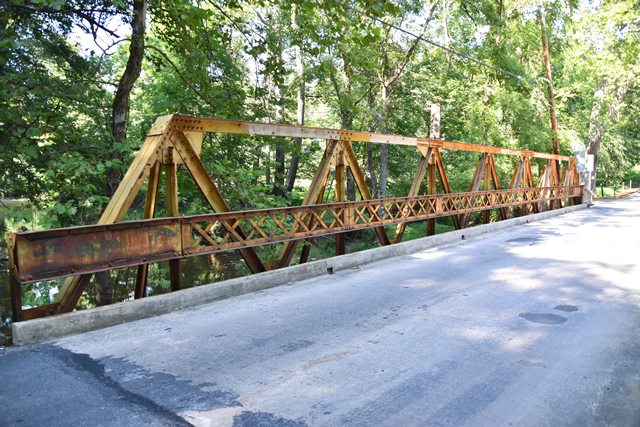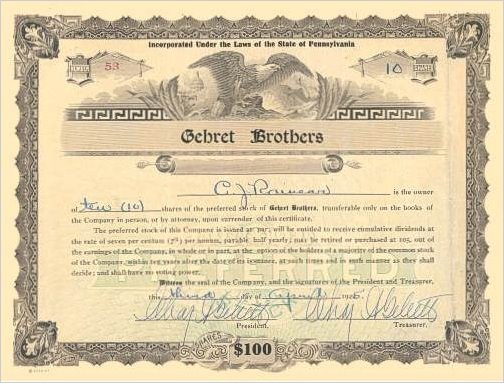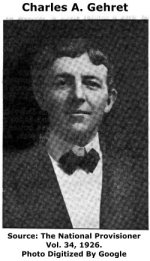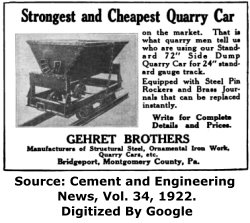We Recommend:
Bach Steel - Experts at historic truss bridge restoration.
BridgeHunter.com Phase 1 is released to the public! - Visit Now
Saginaw Road Bridge

Primary Photographer(s): Nathan Holth
Bridge Documented: 2008-2021
Rural: Chester County, Pennsylvania: United States
1925 By Builder/Contractor: Gehret Brothers of Bridgeport, Pennsylvania
2021
73.2 Feet (22.3 Meters)
75.0 Feet (22.9 Meters)
15 Feet (4.57 Meters)
1 Main Span(s)
153020002000000

View Information About HSR Ratings
Bridge Documentation
This bridge is an example of a truss bridge that was built using lightweight members, with built-up beams on the bridge composed nearly exclusively of paired angles. This style of bridge was a lightweight alternative to the traditional heavier trusses, and this variation was most common from 1905 to 1920. If this bridge truly was built in 1925 as the National Bridge Inventory suggests, it is an extremely late example of its kind. There is the potential that the date is inaccurate, although the date was not disputed in the Historic Bridge Inventory. However, it should be noted that the Historic Bridge Inventory really did not take a serious look at the bridge, since it does not comment on the excessive use of angles in the truss web, while at the same time mentioning that the bridge includes channels in the members, when in fact channels are not a significant part of the truss web. Further, the Historic Bridge Inventory fails to acknowledge that this bridge is apparently the only identified bridge in the entire Commonwealth that has been associated with Gehret Brothers of Bridgeport, Montgomery County, Pennsylvania as bridge builder. This local company was described in an advertisement as "manufacturers of structural steel, ornamental iron work, quarry cars, etc." The advertisement advertises the company's quarry cars. It is likely that bridge construction was only a minor part of the products this company produced. A historical news article discussing the company mentions that they were noted for their manufacture of wire work as well as specialized equipment and materials. The company was headed up by Charles A. Gehret. A search of the Historic Bridge Inventory did not reveal any other bridges that listed this company as the builder. Therefore, this bridge should have been considered locally significant as the last surviving example known to have been built by the local fabrication company.
Despite being found not historic, something truly wonderful and amazing happened at this bridge in 2021: The bridge was comprehensively rehabilitated! This 2021 rehab was the first major work done since 1974. The bridge was picked off its abutments for a thorough rehabilitation of the trusses. The only major loss of integrity during this rehab was the loss of the original lattice railings. However a nearby property owner, Renee A LaBarge, took ownership of 11 of 12 railing panels and intends to display them around the property, so they have been saved from the dumpster. In addition, East Nottingham Township Historical Society took one of the railing panels for their own use. The outcome here is a very positive one!
Renee also took a series of videos documenting the rehabilitation, which is available below as a compilation video. HistoricBridges.org also has a special photo gallery for this bridge, including photos of the bridge before rehab, photos of the bridge during rehab, and photos after rehab was completed.
View Archived National Bridge Inventory Report - Has Additional Details and Evaluation
View A Historical Article About The Builder of This Bridge

Above: Bridge in 2019 before rehabilitation.

Information and Findings From Pennsylvania's Historic Bridge InventoryDiscussion of Bridge The one-span, 75'-long, rivet-connected Warren with verticals pony truss bridge built in 1925 is supported on stone abutments. The bridge has built-up members of standard angles, channels, and plates with gusset plates at the panel points. Rolled floorbeams support a concrete slab deck. Lattice railings are placed to the inside of the truss lines. The bridge is a late example of its type and design with no unusual or noteworthy features. The Warren truss design emerged as one of the most commonly used truss designs after 1895 because of advances in metallurgy and improvements to pneumatic field riveting. Over 125 Warren truss highway bridges have been identified by the survey. They were common on the state's roads and highways by the first decade of the 20th century. Earlier and complete examples in Chester County are 15 7252 0420 0000 (1904) and 15 7232 0120 4205 (ca. 1904). The bridge is not historically distinguished by its technology, setting, or context. Discussion of Surrounding Area The bridge carries a 2 lane road over a stream in a sparsely developed, forested setting. The setting does not have historic district potential. Bridge Considered Historic By Survey: No |
![]()
Photo Galleries and Videos: Saginaw Road Bridge
Bridge Photo-Documentation
Original / Full Size PhotosA collection of overview and detail photos. This gallery offers photos in the highest available resolution and file size in a touch-friendly popup viewer.
Alternatively, Browse Without Using Viewer
![]()
Bridge Photo-Documentation
Mobile Optimized PhotosA collection of overview and detail photos. This gallery features data-friendly, fast-loading photos in a touch-friendly popup viewer.
Alternatively, Browse Without Using Viewer
![]()
2021 Bridge Rehabilitation
Full Motion VideoThis is a compilation of videos taken by Renee A LaBarge which show the 2021 rehabilitation of this historic bridge. Streaming video of the bridge. Also includes a higher quality downloadable video for greater clarity or offline viewing.
![]()
Maps and Links: Saginaw Road Bridge
Coordinates (Latitude, Longitude):
Search For Additional Bridge Listings:
Bridgehunter.com: View listed bridges within 0.5 miles (0.8 kilometers) of this bridge.
Bridgehunter.com: View listed bridges within 10 miles (16 kilometers) of this bridge.
Additional Maps:
Google Streetview (If Available)
GeoHack (Additional Links and Coordinates)
Apple Maps (Via DuckDuckGo Search)
Apple Maps (Apple devices only)
Android: Open Location In Your Map or GPS App
Flickr Gallery (Find Nearby Photos)
Wikimedia Commons (Find Nearby Photos)
Directions Via Sygic For Android
Directions Via Sygic For iOS and Android Dolphin Browser
USGS National Map (United States Only)
Historical USGS Topo Maps (United States Only)
Historic Aerials (United States Only)
CalTopo Maps (United States Only)




